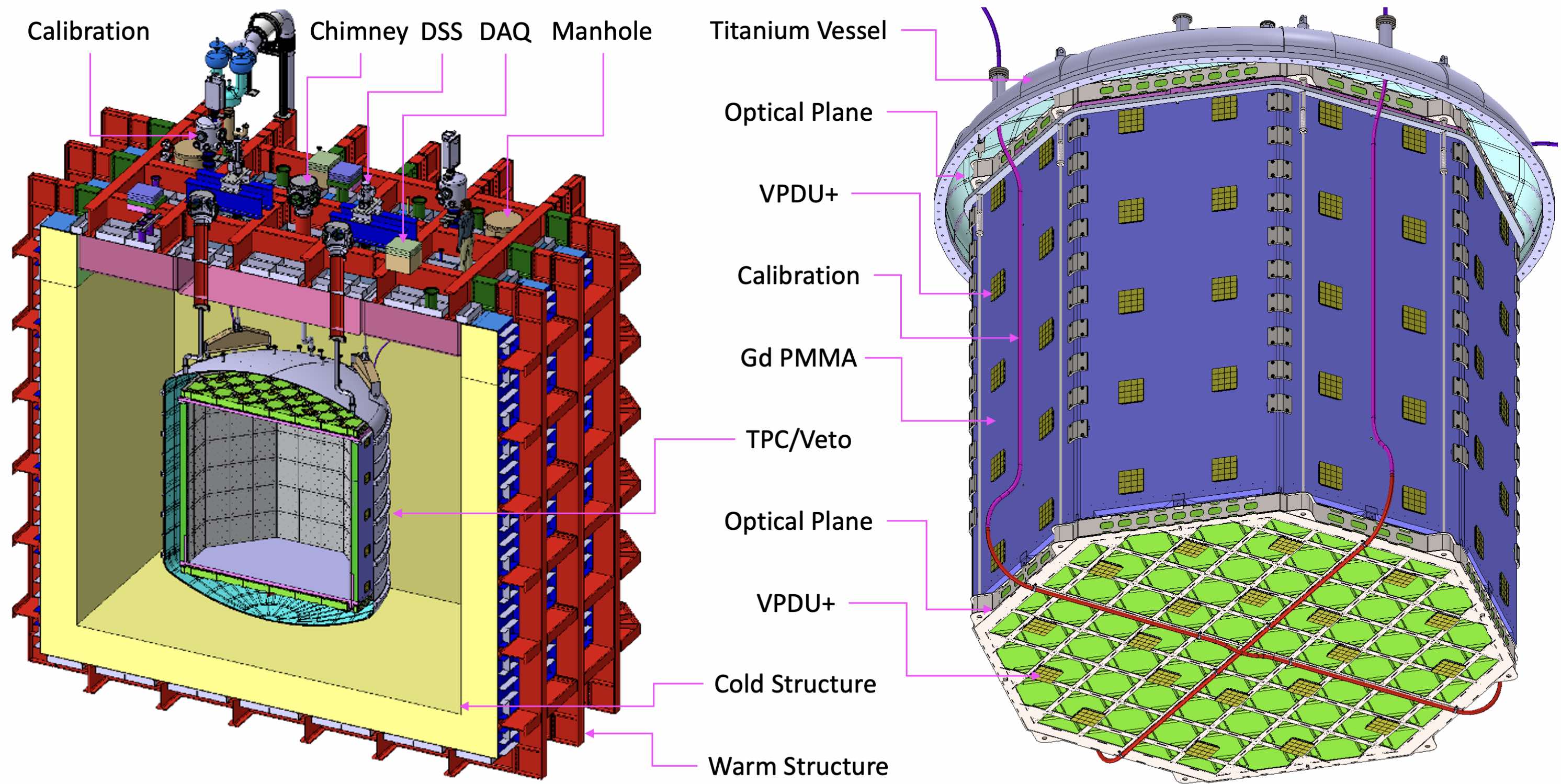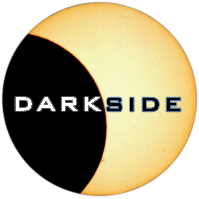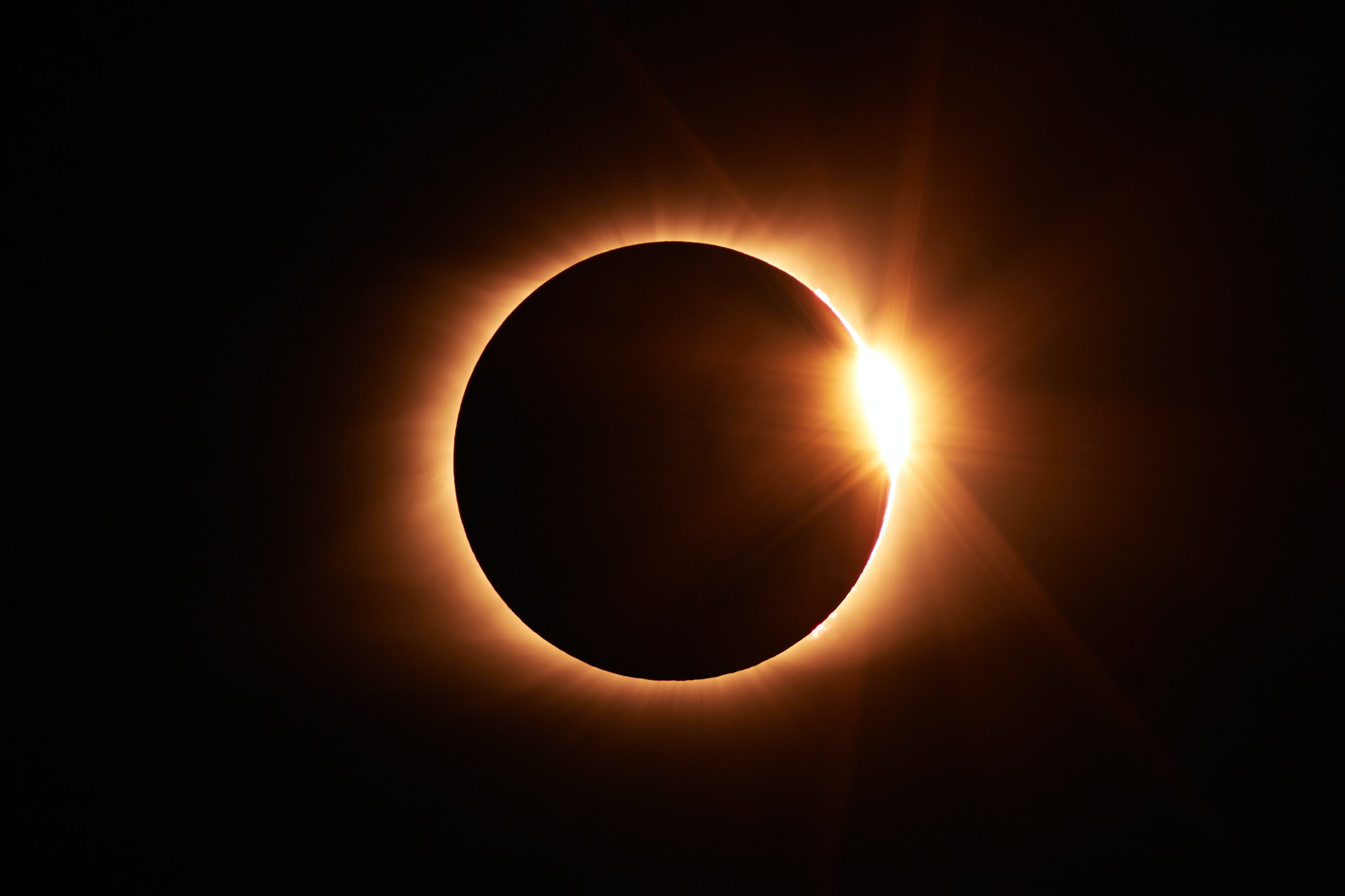Darkside at IN2P3
Direct dark matter detection is one of the research goal of the l’institut de physique nucléaire et de physique des particules (IN2P3) of the centre national de la recherche scientifique (CNRS).
Three teams from IN2P3, from the laboratory Astroparticules et Cosmologie (APC, Paris), the centre de physique des particules de Marseille (CPPM) from the laboratoire de physique nucléaire et des hautes énergies (LPNHE, Paris), are preparing the construction of the DarkSide-20k detector which will be installed at the national underground laboratory of Gran Sasso (LNGS) in Abruzzio in Italy. DS-20k will be sensitive to dark matter particles interacting inside and could be able to detect them before the end of the decade.
We are a dozen of physicists, engineers and students from these three laboratories committed to build the detector and to operate it. We chose to concentrate on two main topics: the reconstruction of events (interactions) to identify signal events and reject background; the calibration system. The responsibility of the collaboration software is in the hands of one physicist from APC; CPPM studies the best way to protect the detector from radon contamination.
More details on our contributions available:
APC activities: link
CPPM activities: link
A team from l’Ecole des Mines de Paris also contribute to the design of the DS-20k detector.
The design of DS-20k is the fruit of long term involvement with low background and rare events detection with liquid argon; it started with DS-10, then DS-50 and DEAP-3600. The French teams have conceived and produced an highly detailed simulation of the detector response which gives a very precise description of the DS50 data. The design of DS20k fully profits from this expertise.
In a few words below, our motivation for this research: dark matter and the DS-20k detector.
Dark matter
A body of astronomical observations, including galactic rotation curves, strong gravitational lensing, and the anisotropy of the cosmic microwave background, indicates that known matter only accounts for a small fraction of the mass-energy content of the Universe. The evidence is widely interpreted to imply that the missing dark matter is composed of as yet unidentified elementary particles. Direct detection of such particles would be an extraordinary discovery, opening a gateway to the investigation of the dark universe and understanding of physics beyond the Standard Model. One of the best motivated dark matter candidates is the weakly interacting massive particle (WIMP), a thermal relic of the Big Bang, which has a sub-electroweak scale interaction cross section and a mass in the TeV/c2-range.
The WIMP dark matter hypothesis is also motivated by the ubiquity of WIMP-like particles in extensions to the Standard Model. The motion of galactic halo WIMPs relative to a detector on Earth could result in WIMP-nucleus elastic collisions detectable in a low-background, low-energy-threshold detector. Such a detector must be capable of unambiguously identifying a small number of nuclear recoils from WIMP interactions over the course of a very large exposure.

The DarkSide detector
The Global Argon Dark Matter Collaboration (GADMC) aims to design, construct, assemble, install, commission, and operate the DS-20k experiment in Hall C of the INFN-LNGS.
DS-20k is designed to observe dark matter particles scattering from argon atoms in the liquid argon (LAr) target. The visible signal from Weakly Interacting Massive Particle (WIMP) dark matter scattering is a nuclear recoil, depositing tens to hundreds of keV of energy in the argon.
The detector is designed to operate for a minimum of 10 years while maintaining negligible instrumental background level in the WIMP search region of interest. The background to our dark matter search is dominated by coherent neutrino-nucleus scattering interactions; thus the sensitivity approaches the ‘neutrino floor’.
The core of the apparatus is a dual phase Time Projection Chamber (TPC) with 51.1t LAr mass, instrumented to detect both argon scintillation photons as well as ionization electrons. The TPC is filled and surrounded by low-radioactivity underground argon (UAr) in which the level of the β radioactive isotope 39Ar is lower by more than a factor of thousand than the standard argon of atmospheric origin (AAr), as demonstrated by the predecessor experiment DS-50.

Publications
Search for dark matter particle interactions with electron final states with DarkSide-50, DarkSide Collaboration, arxiv:2207.11968 (2022)
Search for dark matter-nucleon interactions via Migdal effect with DarkSide-50, DarkSide Collaboration, arxiv:2207.11967 (2022)
Search for low-mass dark matter WIMPs with 12 ton-day exposure of DarkSide-50, DarkSide Collaboration, arxiv:2207.11966 (2022)
Characterization of the scintillation time response of liquid argon detectors for dark matter search, P. Agnes, S. De Cecco, A. Fan, G. Fiorillo, D. Franco, C. Galbiati, C. Giganti, G. Korga, M. Lebois, A. Mandarano, C. J. Martoff, L. Pagani, E. Pantic, A. Razeto, A. L. Renshaw, Q. Riffard, B. Schlitzer, A. Tonazzo, H. Wang, J. N. Wilson, JINST 16 (2021) 11, P11026
Calibration of the liquid argon ionization response to low energy electronic and nuclear recoils with DarkSide-50, DarkSide Collaboration, Phys.Rev.D 104 (2021) 8, 082005
A study of events with photoelectric emission in the DarkSide-50 liquid argon Time Projection Chamber, DarkSide Collaboration, Astropart.Phys. 140 (2022) 102704
Performance of the ReD TPC, a novel double-phase LAr detector with Silicon Photomultiplier Readout, DarkSide Collaboration, Eur.Phys.J.C 81 (2021) 11, 1014
Separating 39Ar from 40Ar by cryogenic distillation with Aria for dark matter searches, DarkSide Collaboration, Eur.Phys.J.C 81 (2021) 4
Sensitivity of future liquid argon dark matter search experiments to core-collapse supernova neutrinos, DarkSide Collaboration, JCAP 03 (2021) 043
SiPM-matrix readout of two-phase argon detectors using electroluminescence in the visible and near infrared range, DarkSide Collaboration, Eur.Phys.J.C 81 (2021) 2, 153
Effective field theory interactions for liquid argon target in DarkSide-50 experiment, DarkSide Collaboration, Phys. Rev.D 101 (2020) 6, 062002
Design and construction of a new detector to measure ultra-low radioactive-isotope contamination of argon, DarkSide Collaboration, JINST 15 (2020) 02 P02024
Measurement of the ion fraction and mobility of 218Po produced in 222Rn decays in liquid argon, DarkSide Collaboration, JINST 14 (2019) P11018
Directional dark matter detection sensitivity of a two-phase liquid argon detector, M. Cadeddu et al., JCAP 1901 (2019) no.01, 014
Low-mass Dark Matter Search with the DarkSide-50 Experiment, DarkSide Collaboration, Phys. Rev. Lett. 121 (2018) 081307
Constraints on Sub-GeV Dark Matter-Electron Scattering from the DarkSide-50 Experiment, DarkSide Collaboration, Phys. Rev. Lett. 121, 111303 (2018)
DarkSide-50 532-day Dark Matter Search with Low-Radioactivity Argon, DarkSide Collaboration, Phys. Rev. D 98 (2018) 102006
Electroluminescence pulse shape and electron diffusion in liquid argon measured in a dual-phase TPC, DarkSide Collaboration, NIM A904 (2018) 23-34
Measurement of the liquid argon energy response to nuclear and electronic recoils, P. Agnes et al. (ARIS Collaboration), Phys. Rev. D97 (2018) 11 112005
The Electronics, Trigger and Data Acquisition System for the Liquid Argon Time Projection Chamber of the DarkSide-50 Search for Dark Matter, DarkSide Collaboration, JINST 12 (2017) 12 P12011
DarkSide-20k: A 20 Tonne Two-Phase LAr TPC for Direct Dark Matter Detection at LNGS, DarkSide Collaboration, Eur. Phys. J. Plus 133 (2018) 131
Simulation of argon response and light detection in the DarkSide-50 dual phase TPC, DarkSide Collaboration, JINST 12 (2017) P10015
Cryogenic Characterization of FBK RGB-HD SiPMs, DarkSide Collaboration, JINST 12 (2017) no.09, P09030
CALIS – a CALibration Insertion System for the DarkSide-50 dark matter search experiment, DarkSide Collaboration, JINST 12 (2017) 12 T12004
Effect of Low Electric Fields on Alpha Scintillation Light Yield in Liquid Argon, DarkSide Collaboration, JINST 12 (2017) P01021
The Electronics and Data Acquisition System for the DarkSide-50 Veto Detectors, DarkSide Collaboration, JINST 11 (2016) P12007
The Veto System of the DarkSide-50 Experiment, DarkSide Collaboration, JINST 11 (2016) 3, 03016
Solar neutrino detection in a large volume double-phase liquid argon experiment, D. Franco, C. Giganti, P. Agnes, L. Agostino, B. Bottino, S. Davini, S. De Cecco, A. Fan, G. Fiorillo, C. Galbiati A.M. Goretti, E.V. Hungerford, Al. Ianni, An. Ianni, C. Jollet, L. Marini, C.J. Martoff, A. Meregaglia, L. Pagani, M. Pallavicini, E. Pantic, A. Pocar, A.L. Renshaw, B. Rossi, N. Rossi, Y. Suvorov, G. Testera, A. Tonazzo, H. Wang, S. Zavatarelli JCAP 1608 (2016) 8, 017
Results from the first use of low radioactivity argon in a dark matter search, DarkSide Collaboration, Phys. Rev. D 93, 081101 (2016)
The Electronics and Data Acquisition System of the DarkSide Dark Matter Search, DarkSide Collaboration, JINST 11 (2016) no.12, P12007
First Results from the DarkSide-50 Dark Matter Experiment at Laboratori Nazionali del Gran Sasso, DarkSide Collaboration, Phys. Lett. B 743 (2015) 456
The DarkSide multi-ton detector for the direct dark matter search, DarkSide Collaboration, Adv. High Energy Phys. 2015 (2015) 541362

